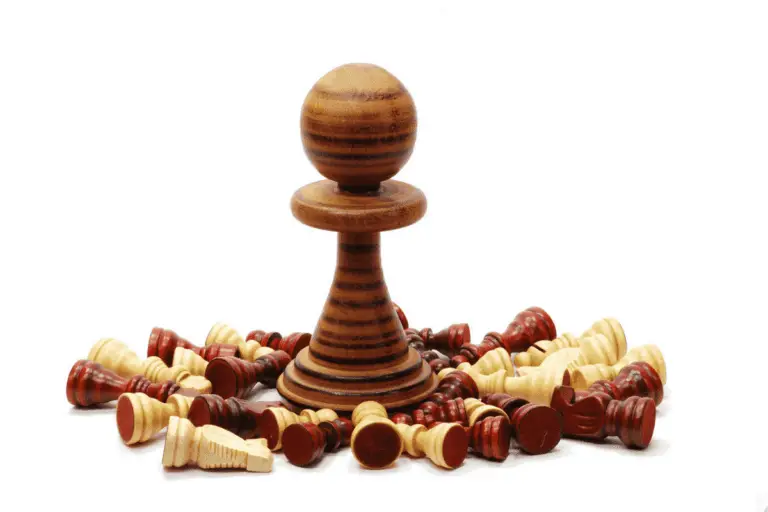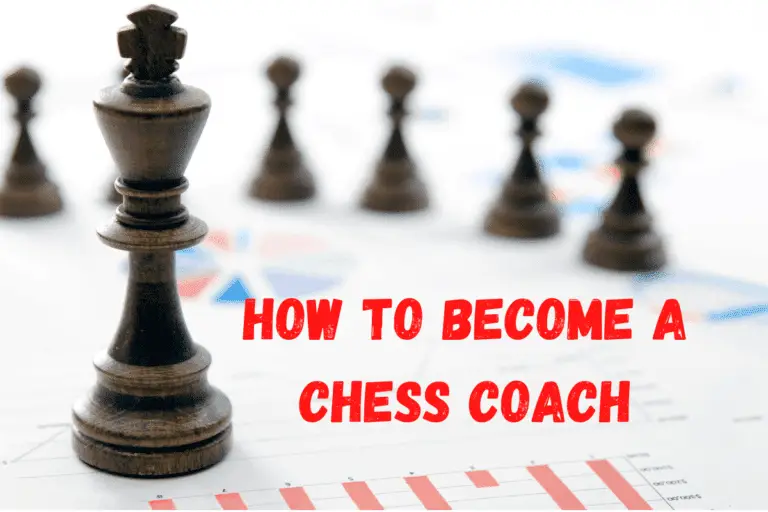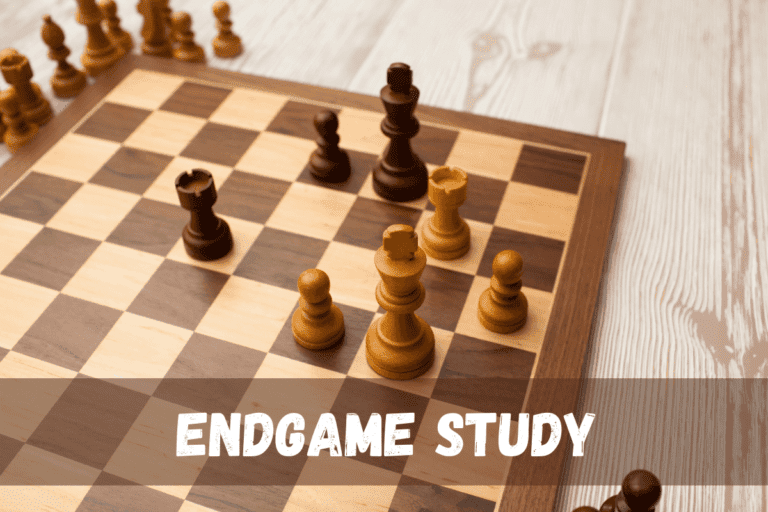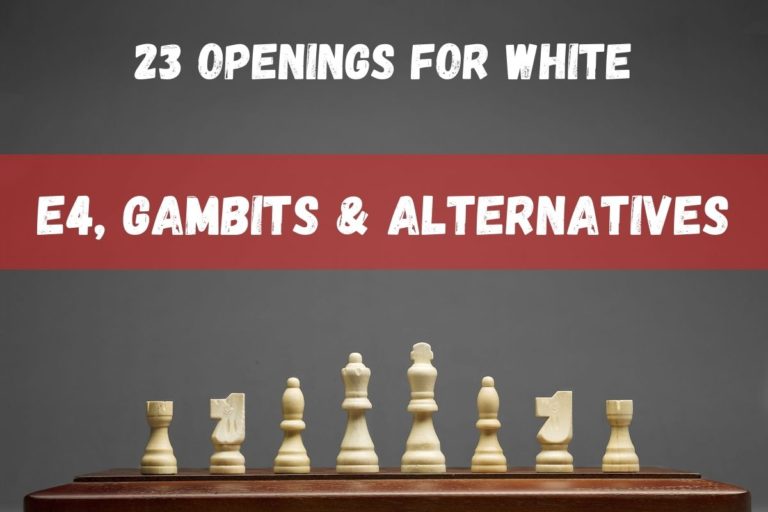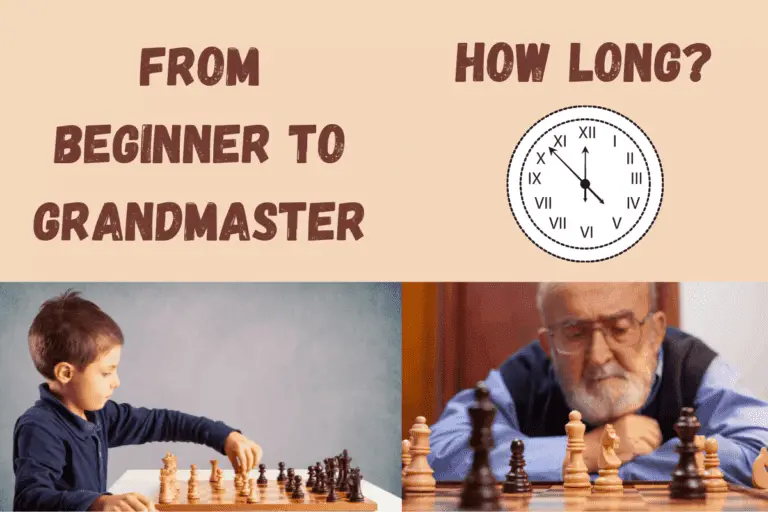The Importance of Middlegame Study in Chess
⭐⭐⭐ Take 6 minutes to read and improve your chess game ➡️ : This article was first published on, and is Copyright of Chessquestions.com
Chess middlegame is the most important phase of the game yet at the same time the most difficult to study. It’s so vast that you can get easily confused as to what is important and what’s not. This is a huge problem, especially at the beginner and intermediate levels.
The reason you should study the middlegame in chess is to become better than average in controlling the center of the board, understanding weak and strong squares, outposts, and positional awareness to execute the tactics in your strategy, maintaining tempo and pressure on your opponent.
In this article, I’ll be sharing the benefits of studying the middlegame along with practical tips and resources.
The middlegame I repeat is chess itself; chess with all its possibilities, its attacks, defences, sacrifices, etc.
Znosko-Borovsky.
3 Important Benefits of Studying Middlegame
Learning chess opening principles, and basic endgame checkmate patterns is great, and you maybe able to survive a poor middlegame phase, but ultimately chess games are won and lost in each three phases.
It is therefore mucho importante to also place some of your study time into the middle game for a variety of benefits.
Play the opening like a book, the middle game like a magician, and the endgame like a machineSpielmann
1. Helps you make plans
Middlegame is the core of chess. It arises after the opening is finished when most of the pieces are developed. After that, the main objective is to start improving the position. How can this be achieved? This is where planning plays a key role. During this phase of the game, one must be strategic and have the ability to calculate the short-term and long-term risks before taking any action.
Making sure and double-checking you are leaving no pieces hanging, unless part of a longer-term middle game tactic is a fundamental aspect of keeping your middlegame tight, your pawn structures intact and maintaining a positional advantage.
2. Makes your thinking more flexible
The middlegame is so vast that there is no single all-weather strategy. You have to play tactical chess games, exploiting the immediate weaknesses in the position or you’ve to be positional in some instances.
Sometimes, you’ve to find a sequence of 3 attacking moves, one quiet move and one defensive move in order to gain a huge advantage. All of this demands flexibility in thinking, right at the time when you’re calculating a development position in your head.
3. Develops your chess understanding
In the opening, if you are well prepared, there is no need to put in mental energy there. On the other hand, the kind of endgames you get depends on what you do in the middlegame.
Because middlegames are vast and full of possibilities, they are the most important to study.
Middlegames are often played on abstract concepts, not on concrete moves even by a stronger player. This phase of the game demands one to think creatively about the position before finding a plan and implementing it. Without any doubt, this will help you boost your understanding of chess.
I hope that there’s enough reason for you to believe why this part of chess is important. Now let’s address the tough part of studying middlegame.
How to Study Chess Middlegame
Here, I’ll share what middlegame basics you should study, how to approach this phase as a beginner in the most practical manner, and the most important resources to learn from. By the end, you’ll have a better picture of how you can work on this crucial phase of the game.
Chess Middlegame Basics
Middlegame is vast. To master, it is a lifelong journey. The first step in the process of mastery is to understand the most basic concepts. So here you need to focus on learning tactics and strategy.
Tactics
So under tactics, you must be well-acquainted with some of the common ones, like pins, forks, discovered checks, double attacks, en-prise etc. Understand the concepts and then solve positions. This is the most simple way to build your tactical understanding.
Strategy
The next important component to focus on is strategy. Here you must study basic concepts like outpost, principles of attacking play, creating simple plans, identifying weak squares, the importance of king safety, basics of piece play etc.
Avoid Worrying About The Following Aspects Until You’ve Got the Basics Down
- Defensive Techniques
- Isolated Pawns
- Exploiting pair Bishop Advantage
Don’t spend time on defensive techniques, isolated pawns, exploiting a pair bishop advantage etc. All of this you can study once your basics are clear. For intermediate players, these are good topics to study but at a beginner level, it’s not recommended you spend your time there.
Study and Learn King Safety First
Let me give an example to make things more clear. Let’s consider you want to study defensive techniques. Now the most important principle to understand in defensive play is to keep your king safe. Therefore, study king safety first before you go on to learn more advanced concepts.
Similarly, to understand how to maneuver your knights, first learn what happens after you bring them to an outpost. Only then you will realize its importance. Studying how to maneuver them won’t be very smart if you don’t know the underlying purpose behind it.
The same goes for other examples.
Tip – To learn middlegames – understand the basics before learning advanced strategies.
Chess middlegame for a beginner – How to approach it during a game?
Now that you have a better understanding of how to study the middlegames, let’s understand how to approach them during a game.
The most important piece of advice is to implement what you’ve studied without fearing whether it’s the best move or not.
The main point is you want to gain important experience and learn from it. After you finish the game, analyze where you went wrong and how you would have improved your game. This is the best way to approach it during a game. You might have a few losses, but in the long run it will only speed up your growth.
Another thing is to actively use your chess player brain in this phase of the game. I’m serious!
The problem is that a lot of players play common opening moves automatically because they are already familiar with them. Familiarity can easily get carried into the middlegame. It is essential to avoid this auto-pilot attitude at this point and ensure you are playing the correct moves.
Don’t be afraid to exchange. In most cases, you will want to make a sequence of moves for material and value gain, but it is not always essential if you have a longer-term strategy in play.
How to practice middlegames?
The best way to practice them is to study the concepts first, implement them in your game, make mistakes and gain experience through it. Nothing beats real practice and making a fatal mistake to imprint it on your mind for next time.
Game analysis becomes very important here. Discover your mistakes through analysis and work on eliminating them. Understand the bad plans you executed and learn better ones through trial and error.
Did you struggle to bring your knight to an outpost or the bishop to an open diagonal?
Become aware of that. Mistakes follow a certain pattern. Once you shed light on it, you’ll consciously make an effort to avoid it. You’ll be surprised how much you can improve by mere awareness of your mistakes. But all of this starts by playing a real game of chess.
Middlegame theory and books (Practical Resources)
There are tons of available resources for this phase of the game including books, videos etc. Some of the good chess books on middlegames include –
‘Build Up Your Chess’ Series by Arthur Yusupow
‘My System’ by Aaron Nimzowitch (A chess classic everyone must read)
‘Winning Chess’ Series by Yasser Seirawan and Jeremey Silman – In that, read the books Combinations, Tactics, Strategies and Play.
On Youtube, there’s a huge amount of information available these days. Watch some of the interviews by Chessbase India where top players have shared their insights on it. And by top, I mean elite grandmasters including the world champion!
Below, I’ll answer some common chess questions.
Is the middle game important in chess?
Middlegame is the most important phase of the game, which is at the same time the most difficult to learn and master. That’s because it’s very vast, because of which there’s no ‘one size fits all’ strategy.
When does a chess opening become the middle game?
After all of the minor pieces, including central pawns are developed, the opening is over and the middle game starts. Usually, this happens after 15-20 moves.
How do you attack in the middle game in chess?
Strong players will identify a weakness near the king, bringing pieces closer to it, before doubling down the pressure against the weakness, whilst avoiding complicated positions.
When does the middlegame end and the end game start?
The middlegame ends after pieces get exchanged, especially the queen, and each side is left with fewer pieces, ideally less than 4 per side. After that, the endgame starts.
Conclusion
I hope this has given you a better picture of why you should study middlegames, how to approach them, and the best resources to study them for your chess game. It’s vast but it’s also the core essence of the game that is rich in possibilities and ideas, attacks and defenses. Consider hiring a chess coach to help you curate a training plan to improve your middlegame. This will keep you focused on studying the most important concepts of this phase and the variation of approaches you can use.


